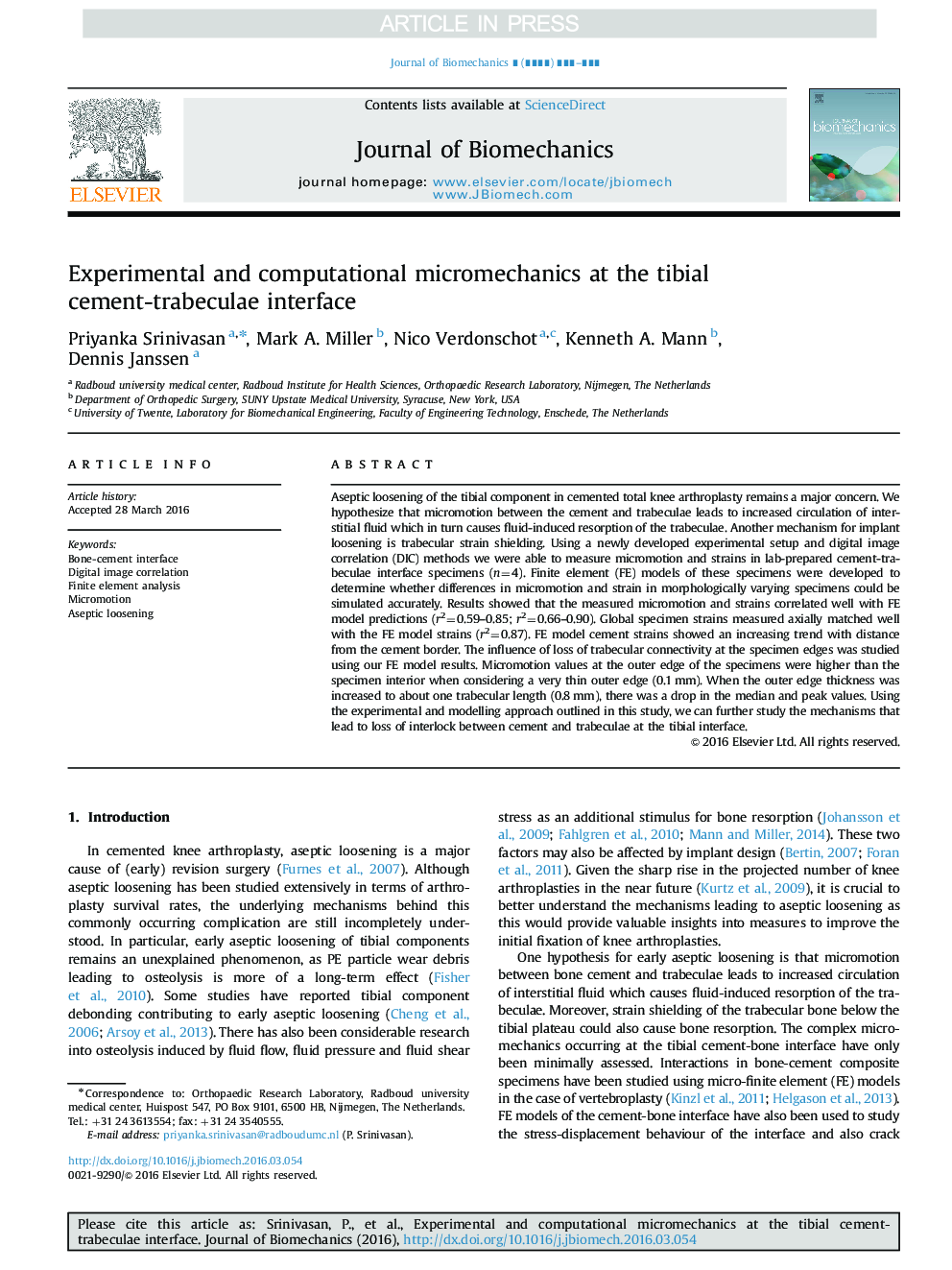| Article ID | Journal | Published Year | Pages | File Type |
|---|---|---|---|---|
| 10431057 | Journal of Biomechanics | 2016 | 8 Pages |
Abstract
Aseptic loosening of the tibial component in cemented total knee arthroplasty remains a major concern. We hypothesize that micromotion between the cement and trabeculae leads to increased circulation of interstitial fluid which in turn causes fluid-induced resorption of the trabeculae. Another mechanism for implant loosening is trabecular strain shielding. Using a newly developed experimental setup and digital image correlation (DIC) methods we were able to measure micromotion and strains in lab-prepared cement-trabeculae interface specimens (n=4). Finite element (FE) models of these specimens were developed to determine whether differences in micromotion and strain in morphologically varying specimens could be simulated accurately. Results showed that the measured micromotion and strains correlated well with FE model predictions (r2=0.59-0.85; r2=0.66-0.90). Global specimen strains measured axially matched well with the FE model strains (r2=0.87). FE model cement strains showed an increasing trend with distance from the cement border. The influence of loss of trabecular connectivity at the specimen edges was studied using our FE model results. Micromotion values at the outer edge of the specimens were higher than the specimen interior when considering a very thin outer edge (0.1Â mm). When the outer edge thickness was increased to about one trabecular length (0.8Â mm), there was a drop in the median and peak values. Using the experimental and modelling approach outlined in this study, we can further study the mechanisms that lead to loss of interlock between cement and trabeculae at the tibial interface.
Keywords
Related Topics
Physical Sciences and Engineering
Engineering
Biomedical Engineering
Authors
Priyanka Srinivasan, Mark A. Miller, Nico Verdonschot, Kenneth A. Mann, Dennis Janssen,
